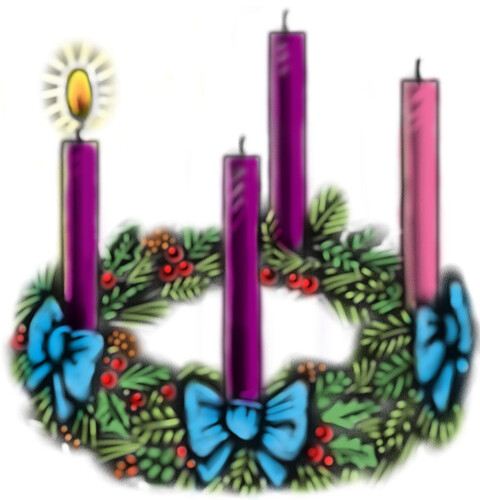Celebrating Advent is more than just opening a door of a cardboard calendar and discovering candy (although that is pretty exciting).
Advent starts this Sunday, December 3 and begins the holy season of the Christian church. Advent marks the remembrance of expectation and preparation for the birth and arrival of the Christ child.
The word advent comes from the Latin word “adventus” which means “coming”. Advent is a double reminder of Christ’s first and second coming. It is a reminder of the waiting that the Hebrews did before Christ’s birth and the waiting Christians are doing for Christ’s second coming.
The season is marked by expectation, excitement, preparation and anticipation. It is also marked by a yearning for the evils of this world to be finished and conquered. It is also a celebration of promise.
The themed readings during advent are often done to prepare for the Second coming and commemorate the first. Lessons are prepared for each Sunday in December to remind and teach of Christ’s first coming as well as prepare and train for the return of the King.
In the Christian sense, advent is the four weeks before Christmas. Advent wreaths are traditionally placed in homes with four candles, one for each Sunday before Christmas or in December. Each candle represents a specific part of the Advent story.
The first candle symbolizes hope affiliated with prophecy.
The second candle typically deals with the peace that Christ brought and brings. The third candle symbolizes the love of Christ, and the fourth represents the joy of Christ’s coming and the expectant joy of Christ’s jubilant return.
The color of the advent candles are not necessarily traditional, however, the catholic and protestants have picked up the tradition of using blue or purple for the 1st, 2nd and 4th candle and the 3rd candle is more typically rose-colored. There is also often a gold or white candle placed in the middle of the wreath which is lit on Christmas day to commemorate Christ himself.
The purple color of the candles represents penitence and fasting as well as royalty. Purple is still commonly used in catholic churches. The royalty connection being to Christ himself as the King of Kings, and the penitence and fasting being closely tied to other Christian practices.
Purple is also the color of suffering used during Lent and the Holy Week. Therefore, the color purple represents a close connection between Christ’s birth and death.
In order to commemorate the fact that Christ’s birth and death were purposeful and connected in order for our salvation, the same color is used.
Indeed, Advent was originally a time of penitence and fasting for the church.
Another tradition closely tied with the advent season is the use of Advent calendars. There are several ways to make advent calendars, and they are commonly found in stores for children with candy inside each day. Numbers of each day of December through the 24th are represented and can often be opened to reveal a piece of chocolate or some other small gift. The little gifts are often seasonal and may represent a part of the nativity or some other connection to the Christmas holiday.
The advent wreath is also popular, its circular shape representing eternity.
Winter Lent is also closely tied to the season of advent in Eastern Orthodox churches. The main idea is that the faithful are forbidden to be absent from church during the three weeks of advent.
In Western Christianity, the advent traditionally begins the Sunday after Thanksgiving and ends before the Vigil of Christmas on the evening of the 24th.
Advent also varies from country to country. IN England, an old custom included poor women carrying around “advent images”. These were two dolls dressed as Jesus and the Blessed Virign Mary. It was expected to bring in donations of a halfpenny for everyone that was exhibited. It was also thought to be bad luck if the household was not visited by these women before Christmas Eve.
Also, in Normandy, farmers employed children under the age of twelve to run through the fields and orchards and light them on fire with torches. This was believed to drive out vermin which may have damaged the crops. Italy has another Advent tradition by concluding the Advent season with Calabrian pifferari, or bagpipe players who play before the shrines of Mary. This tradition involves the legend that the shepherds played bagpipes when they came to the manger in Bethlehem to honor the birth of the Messiah.


